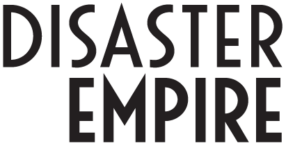Part 1 of the Road to Resilience Series

Resilience Map of the Future
The road to resilience for business continuity is one we are already traveling on. In this series, I am laying a foundation for what the business continuity program could be. I hope you will join me on this journey to explore the elements of a successful program and how it can evolve in the future. It’s a path that involves business continuity, risk, crisis, and program management.
To set the groundwork, I will reference ISO 22301. Many of you are familiar with the International Standard for Business Continuity Management Systems. For those of you who are not, I will briefly say that it is a process for how to develop, maintain, and respond to business disruptions. ISO standards layout consistent guidelines. Auditors reference them to understand various business continuity programs, which vary widely by company and industry.

Elements of the roadmap
Many countries line up with specific BCM legislation and regulations. However, the UK’s supervisory authorities set new rules for financial firms and financial market infrastructure. The Bank of England, PRA, and FCA require firms to map, test, and demonstrate they can withstand challenges to their operational resilience. Soon, I anticipate that regulators will expand their interest to other sectors. So, it is advantageous to outline a resilience program with this in mind.
My roadmap will lay out a vision, strategy, requirements, program plan, markers, and metrics for success. It assumes a resilience focus and will leverage as a long-term strategic document to help your program grow. This map is not a business plan. Instead, it is a flexible, working proposition to capture high-level, relevant actions for program conversion.

Full-steam ahead with a map
Successfully selling your vision to embed change into an organization is vital. For instance, leadership needs to understand the hows and whys of recommended changes and indications of success. I will leave how to do that up to you, as it varies from high – low cultures, along with the defined values of individual companies. However, I suggest choosing a high-level visual document that incorporates a timeline.
Additionally, it should show improvements or adjustments and a clear strategy. Make the resources needed and any cost-benefits of the (re)launch easily understood. A strong vision describes what teams will work together and what is required to rally around the plan. It explains how it will grow, be maintained, and expanded. The roadmap should demonstrate how cross-functional teams will enable the program to go faster and further.

Case-study: Netflix's resilience innovation
I recently came across a LinkedIn post by Scott Baldwin, the Head of Enterprise Resilience at Netflix. It aligned with what I’ve written in my blog, A Customer Focus Means Enhanced Resilience, about the importance of culture and a customer-centric approach to building plasticity in crisis response. In Netflix’s way: innovating resilience, a method is described that incorporates the company’s freedom & responsibility virtues with a structure to understand each business unit’s readiness.
The program achieves this by enabling stakeholder scoring to provide resilience insights. It then leverages dependency mapping with predictive modeling to understand strengths and gaps. Finally, it underpins the program by offering ongoing expert consultation. Overall, it seeks to understand stakeholder maturity, risk tolerance and builds a framework of continuing BCM activities. The program’s success is one to watch, but I anticipate it is well-positioned to flex with business growth. Netflix is well on its way to the road to resilience.

Series kick-off
This series will give you the road mapping basics you need to kick-start the process at your organization, from program visualization concepts to risk monitoring, crisis management, and service mapping. At its core, a roadmap is a communication tool. It gets stakeholders, executives, and teams on a single trajectory for meaningful transformation.
As with any good kick-off tool, a roadmap is flexible, enables collaboration, and is transparent. Creating a robust foundation will allow execution in the most timely and efficient manner. So, not only will you strengthen your program for employees, customers, third-party, and business disruptions, but embed an organizational resilience framework. Next up, the second blog in my series will describe how to set a resilience vision.
